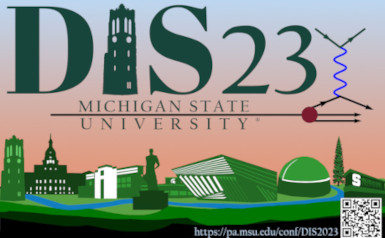Speaker
Description
The structure of the proton has been studied by measuring the parton distribution function, which is the parton density distribution as a function of the longitudinal momentum of the parton, for long time. In the last few decades, the three-dimensional imaging of nucleon, such as the transverse momentum dependent parton distribution functions (TMDs), has received attention to better understand the structure of the nucleon. The Boer--Mulders function is one of the TMDs that represents the correlation between the transverse spin and the transverse momentum of the quark. The Boer--Mulders function can be extracted from the azimuthal angular distribution of the Drell--Yan process. In the naive Drell--Yan model, the angular distribution of the Drell--Yan process has a $\cos\theta$ modulation ($\lambda=1$) while no $\cos2\phi$ ($\nu=0$) modulation, where $\theta$ and $\phi$ denote the polar and azimuthal angle, respectively. However, the sizable $\cos2\phi$ modulation has been observed by NA10 and E615 experiments, which are pion-induced Drell--Yan experiments. The E866 experiment reported the first and only results of the angular distribution of the proton-induced Drell--Yan process using 800 GeV proton beam. In contrast to pion-induced Drell--Yan experiments, E866 shows significantly smaller $\cos2\phi$ modulation.
The SeaQuest experiment is a Drell--Yan experiment at Fermilab that measured the Drell--Yan dimuons using the 120 GeV proton beam colliding with liquid hydrogen and deuterium targets. We have measured the angular distribution of the proton-induced Drell--Yan dimuons in a kinematics region different of E866. In this talk, the progress of the angular distribution analysis will be presented.
| Submitted on behalf of a Collaboration? | Yes |
|---|




